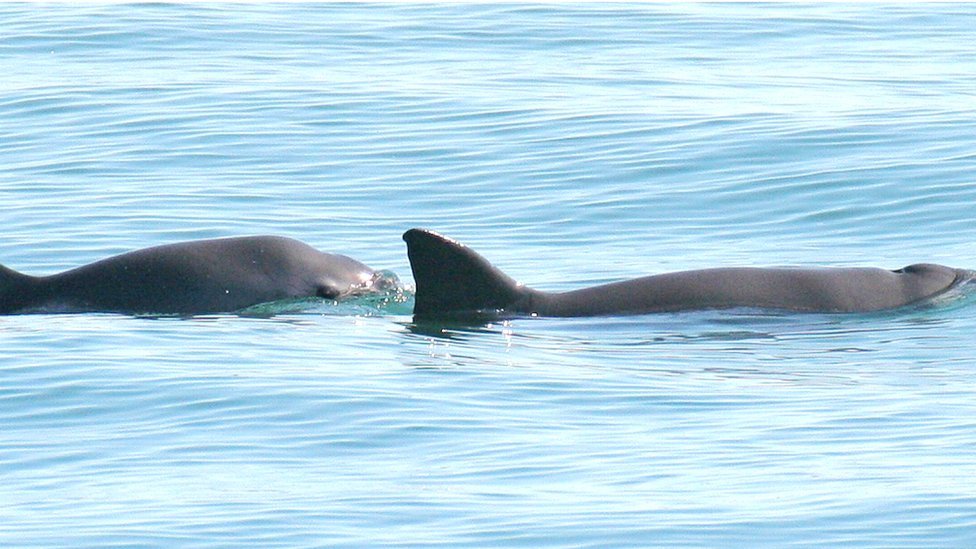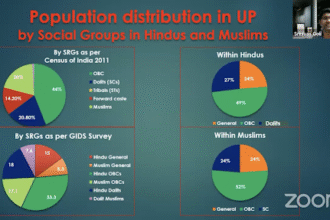The vaquita porpoise is the world’s rarest marine mammal. It lives in a small part of the ocean. Sadly, very few are left. This brings up an urgent question: why is the vaquita porpoise endangered? The main reason is illegal fishing. Large nets, called gillnets, trap these tiny porpoises. They cannot get to the surface for air and drown.
The vaquita is a small, shy porpoise. It has dark rings around its eyes and mouth. This gives it a unique, charming look. Its home is the northern part of the Gulf of California in Mexico. This is the only place in the world you can find them. The situation is critical. Understanding why the vaquita porpoise is endangered is the first step. We must act now to save them from disappearing forever. This article will explain the primary threats and what we can do to help.
What Is the Vaquita Porpoise?
The vaquita is a very special animal. It is the smallest of all porpoises, whales, and dolphins. Learning about this creature helps us see why its survival is so important. Its small size and limited habitat make it very vulnerable to threats.
A Rare Marine Mammal
The vaquita is one of the most endangered marine species on Earth. It grows to about five feet long. This makes it the smallest cetacean. Its shy nature means it avoids boats. Scientists find it very hard to study them in the wild. The vaquita porpoise population has dropped sharply. There are likely fewer than 10 individuals left. This makes every single vaquita incredibly precious for the species’ survival.
Where the Vaquita Porpoise Lives
Vaquitas have a very small home. They only live in the upper Gulf of California. This tiny area is their entire world. They prefer shallow, murky waters near the shore. This limited range is a key reason why the vaquita porpoise is endangered. Any threat in this small area affects the whole population. Habitat loss in the Gulf of California is a serious concern for their future.
Why the Vaquita Is Important to the Ecosystem
Every animal has a role in its environment. The vaquita is a predator near the top of its food chain. It eats small fish, squid, and crustaceans. By doing so, it helps keep these populations in balance. Losing the vaquita would disrupt the entire local marine ecosystem. Marine biodiversity threats like this can have ripple effects that we do not fully understand yet.
The Declining Vaquita Porpoise Population
The number of vaquitas has fallen dramatically. In the late 1990s, there were hundreds. Now, the vaquita porpoise population is critically low. This sharp decline is almost entirely due to human activities. The main cause is getting caught in fishing nets. This sad reality underscores why the vaquita porpoise is endangered and needs immediate protection.
Why Is the Vaquita Porpoise Endangered?
The primary reason why the vaquita porpoise is endangered is bycatch. This means they are caught by accident. Fishermen are not trying to catch vaquitas. They are trying to catch an endangered fish called the totoaba. The totoaba’s swim bladder is very valuable in some markets. The nets used for this illegal fishing are deadly for the small porpoise.
The Impact of Illegal Fishing Practices
Illegal fishing is the biggest threat. Fishermen use large mesh gillnets to catch totoaba. These nets hang in the water like invisible walls. Vaquitas swim into them and get trapped. Because they are mammals, they need to breathe air. Trapped underwater, they drown quickly. This one issue is the central cause explaining why the vaquita porpoise is endangered.
Bycatch in Gillnets: A Silent Killer
Bycatch is the term for animals caught unintentionally. The gillnet fishing impact on vaquitas is devastating. These nets are not selective. They catch anything that swims into them. For every totoaba caught, many other animals, including vaquitas, die. This makes gillnets the main driver of the vaquita porpoise extinction risk.
Habitat Destruction and Pollution
The vaquita’s home is also under threat. Pollution from nearby farms and cities flows into the Gulf. This can reduce the food available for vaquitas. Dams on the Colorado River also reduce freshwater flow into the Gulf. This changes the habitat. While not the main cause, habitat degradation adds more pressure on the few remaining animals. It contributes to the complex problem of why the vaquita porpoise is endangered.
Limited Gene Pool Concerns
With so few vaquitas left, their genetic diversity is very low. This makes the species weaker. It is harder for them to adapt to changes. A small gene pool can lead to health problems. It makes recovery much more difficult. This biological factor is another layer of the crisis. It complicates efforts for saving the vaquita porpoise and makes every loss even more significant.
How Can We Save the Vaquita Porpoise?
Saving the vaquita is a huge challenge. But it is not impossible. It requires strong action and cooperation. We must stop the use of deadly gillnets. We also need to support local communities. Conservation efforts for the vaquita are a race against time.
Banning Gillnets in Critical Habitats
The most important step is to completely ban gillnets. This ban must be enforced in the vaquita’s habitat. The Mexican government has taken steps to do this. But illegal fishing continues. We need better enforcement on the water. This includes patrols to find and remove illegal nets. Protecting endangered species like the vaquita depends on ending this threat.
Promoting Sustainable Fishing Practices
Local fishermen need other ways to make a living. We can help them switch to safer fishing gear. Gear that does not catch vaquitas exists. Supporting these communities is key. They need financial help and training. Sustainable fishing helps both people and wildlife. It is a critical part of the solution for why the vaquita porpoise is endangered.
Raising Awareness Among Local Communities
Many people do not know about the vaquita. This includes some who live near its habitat. Education programs can help. They teach people about this unique animal. They explain why saving the vaquita porpoise is important. When local people care, they become powerful allies. They can help report illegal fishing.
Supporting Conservation Organizations
Many groups are working to save the vaquita. Organizations like the World Wildlife Fund (WWF) and Sea Shepherd are active in the region. They work on removing nets, research, and policy. You can help by donating or spreading the word. Supporting these efforts provides hope for the vaquita. These groups are on the front lines, fighting the vaquita porpoise extinction risk.
FAQs About Why the Vaquita Porpoise Is Endangered
How many vaquitas are left in the wild?
It is estimated that fewer than 10 vaquitas remain. This makes them the most endangered marine mammal in the world.
What is being done to protect the vaquita?
Efforts include a ban on gillnets, increased naval patrols in their habitat, and programs to retrieve lost or illegal “ghost” nets from the water.
Can the vaquita population recover?
Yes, scientists believe the population can recover if gillnet deaths stop completely. Vaquitas can have calves every one to two years. If we protect them, they have a chance.
Why should we care about the vaquita?
Saving the vaquita means saving its entire ecosystem. Protecting this rare species reflects our commitment to preserving global biodiversity for future generations. It is a key part of our responsibility to the planet.
Conclusion
The question of why is the vaquita porpoise endangered has a clear, yet difficult, answer: illegal gillnet fishing. These tiny porpoises are dying as accidental bycatch in the hunt for the totoaba fish. Their limited habitat in the Gulf of California makes them incredibly vulnerable. Habitat degradation and a tiny gene pool add to the extreme pressure on their survival.
However, there is still hope. The path to saving the vaquita porpoise requires a united effort. We must fully enforce the gillnet ban, support local communities with safer fishing alternatives, and raise global awareness. Conservation groups are doing vital work on the ground that needs our support. The vaquita’s fate is in our hands. By taking decisive action now, we can stop the countdown to extinction and give this beautiful, rare porpoise a future.









